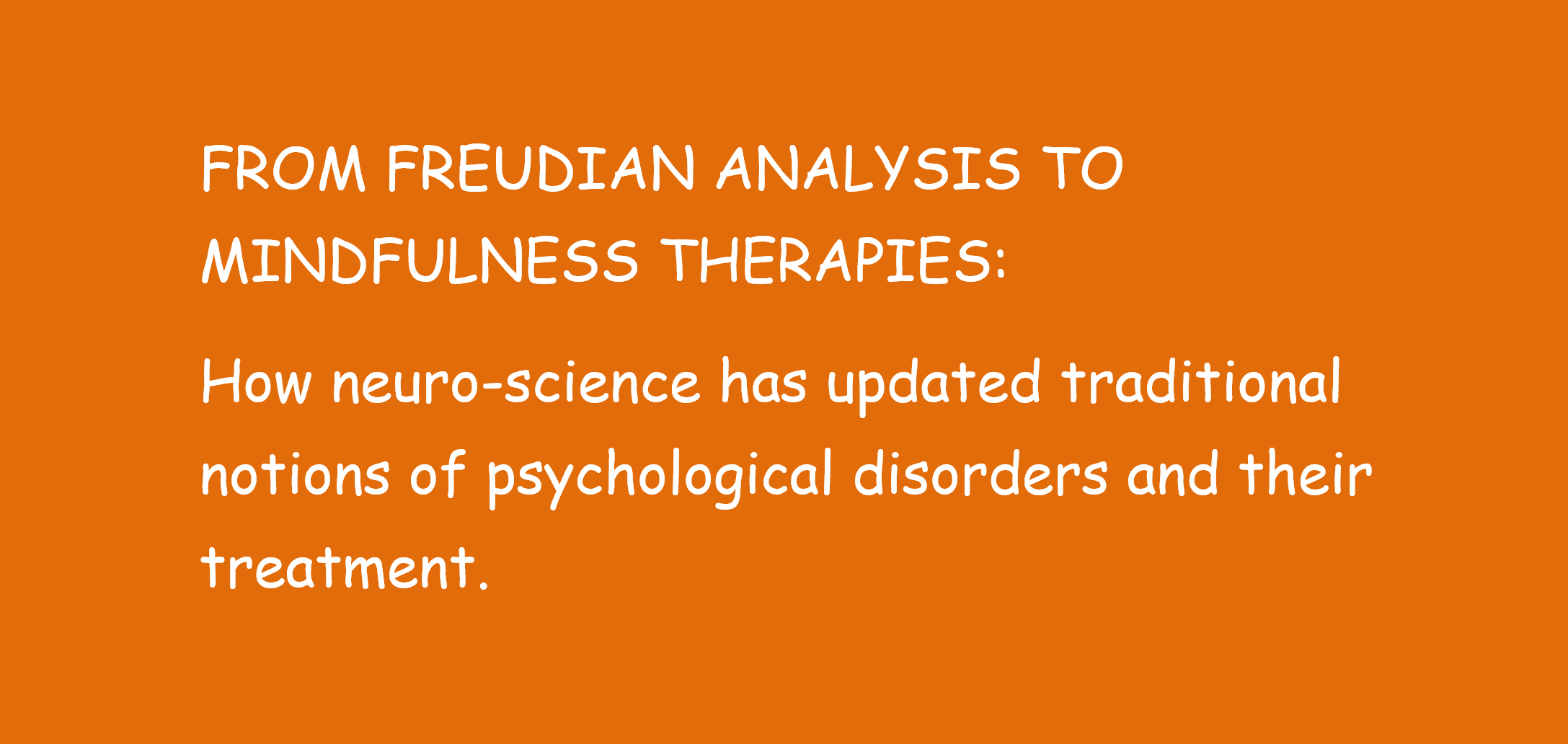
Recently I was explaining my therapeutic approach to a new client . When I mentioned that one of the goals of therapy was to increase mindfulness, she interrupted and said that she was not “into” yoga!
While mindful meditation is a part of the practice of yoga, the importance of mindfulness extends much further. The meaning of mindfulness has evolved from its association with meditation into therapeutic point of view which promotes expanding one’s awareness.
In addition to broadening the horizon of one’s consciousness, mindfulness also explains the inter-connections between bodily sensations, emotions, thoughts , trauma from the past and present stressors . The Mindfulness Movement | Skeptical Inquirer
Another important feature of mindfulness is self-monitoring or keeping an eye on the various aspects of our conscious experience. Self-monitoring helps people be more present and in-the-moment without being distracted by grief and regrets of the past or worries about the future. Pastoral Counseling ? | Pastoral Counseling Syracuse NY (revmichaelheath.com)
This intentional habit is useful in calming anxiety because it increases understanding. Greater understanding allows us to make sense out of our reactions while providing a normalizing perspective on one’s life.
Further, this outlook has provided a way to integrate traditional psychological concepts with neurological science. The term bridges analytic concepts such as the influence of childhood experience on personality development and the realm of the unconscious.
The Unconscious, Neuro-Science, Past Trauma and Emotional Dysregulation
The Unconscious Sigmund Freud, a neurologist, believed that our behavior was influenced by unconscious factors which conflicted with conscious awareness. Further, he demonstrated that these conflicts could cause physical and emotional disease.
Neuro-Science and ANS Freudian psychoanalysis believed that making the unconscious conscious could allow the patient to resolve this inner-conflict. Today, the reality of unconscious conflicts are understood by neuro-science as a phenomenon resulting from the basic structure of the brain and the autonomic nervous system (ANS). Neuro-science has known for a long time how certain physical systems are controlled by the ANS and function outside an individual’s conscious control, e.g. the beating of the heart.
It is important to understand that the human brain is sometimes at odds with itself. What Freud described as a conflict between the Id and the Super Ego; neuro-science explains as conflict between the limbic system and the cortex.
The limbic system is essentially what Freud called the Id. The limbic system is the ancient part of the brain whose only function is procreation and survival. It is not rational and it has no concern for others. Apart from sexual arousal, its only two modes are fight or flight.
Trauma and Dysregulation It has been long accepted that stress blocks access to the reasonable part of our brain, the cortex (what Freud thought of as the ego and super ego). Thus, fight or flight orders are made without conscious consideration because filtering through the cortex delays an urgent response time. For example, a batter immediately jumps back without thinking if he he perceives a pitch coming for his head.
Brain research has shown that the brain’s ability to accurately asses threat is impaired by the lasting impact of trauma and traumatic memory. Unresolved trauma from the past combines with present stressors to set off false alarms and trigger irrational and exaggerated (hostile or withdrawn) reactions.
Trauma is not only not damaging to neuro-pathways at the time it is experienced but traumatic memories also can corrupt the brain’s threat detection mechanism (the amygdalae) long term. Instead of only sounding an alarm under dangerous threats, a traumatized brain develops a “hair-trigger” response and over-reacts.
Dysregulation Mindfulness theory interprets Freud’s notion of unconscious conflicts with the help of neuro-science. When seen through the prism of the ANS, It understands many psychological disorders as a state of unresolved conflict (emotional dysregulation) where n unconscious limbic impulses override the conscious/intentional control of the cortex.
Dysregulation in Action For example, think of a Seinfeld episode when a panicked George , upon smelling smoke while at his girlfriends party, rushes to the exit stepping on people and even pushing his girlfriend to the floor.
George, in this instance, provides a perfect example of emotional dysregulation. In other words, his response to the situation was irrational, exaggerated and without the slightest concen for anyone but himself.
How Increasing Mindfulness Promotes Emotional Regulation
Over the past twenty years, along with new somatic techniques, mindfulness has become a key component in most trauma-related psychotherapy practiced today.
Research reveals that becoming aware of the connections between past trauma and present emotional/ behavioral distress is key to gaining control over dysfunctional limbic reactions. Understanding how elements from the past can interfere with perception in the present is the heart of not only Freudian analysis but also mindfulness therapies.
Emotional dysregulation and irrational outbursts stem from a person’s lack of awareness and lack of a resolution of prior trauma. Being mindful of both how the limbic system blocks reasonable responses and how triggers from past trauma distorts an accurate perception of a threat is necessary to regain control.
For example, George falsely assumed that the smell of smoke meant that he was facing an imminent /deadly threat. If George had been aware that the smell of smoke was a trigger, he could have calmed himself and acted more reasonably.
Going forward, becoming emotionally regulated is a process which involves a lot of practice : 1) Becoming aware of triggers and the original trauma, i.e. recognizing the similarity of a present stimulus to past trauma. 2) differentiating the present experience from the past trauma 3) calming the immediate panic 4) Reasonably re-assessing the situation and responding in an appropriate fashion.
Becoming emotionally regulated is a process. The good news is that, with practice, real progress can be made in gaining control and reducing both the frequency and duration of unpleasant experiences.
Rev. Michael Heath , LMHC, Fellow AAPC 3 16 2023


